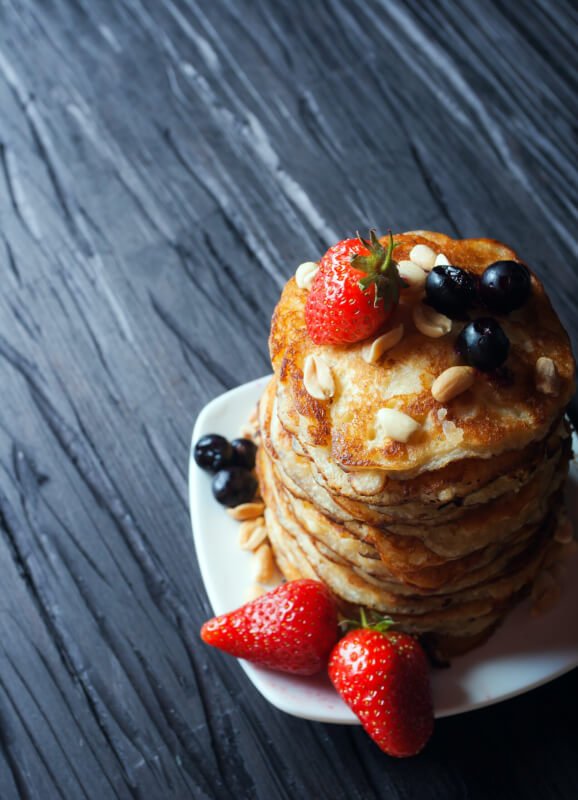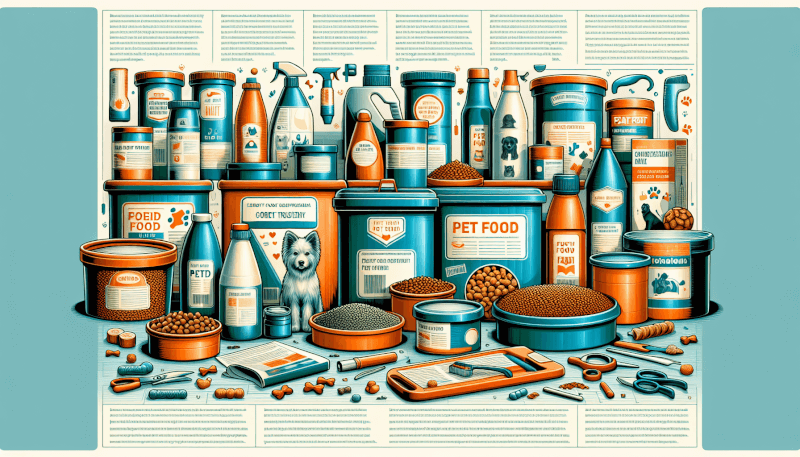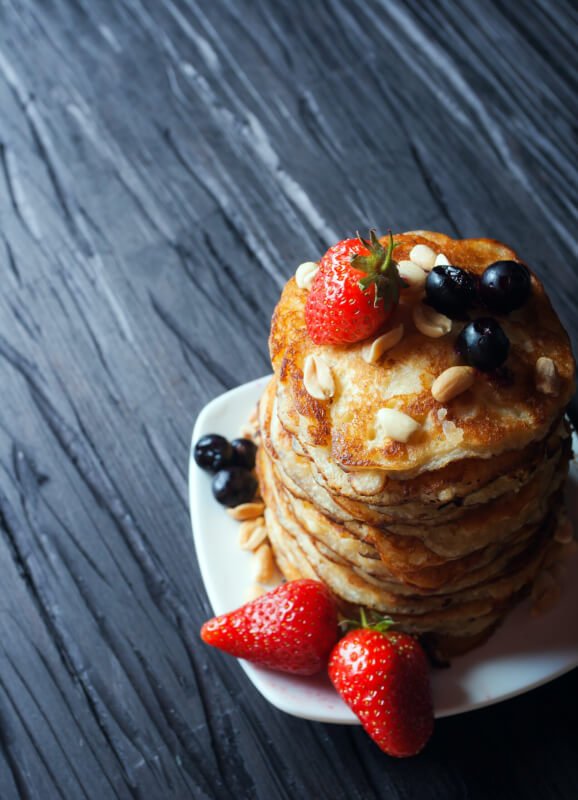In this informative article, you will discover essential tips and tricks for effectively storing your pet’s food to keep it fresh and safe. Whether you have a furry feline friend or a lovable canine companion, ensuring that their food remains in top-notch condition is crucial for their overall health and well-being. From choosing the right storage containers to proper handling and storage techniques, this article will equip you with the knowledge you need to maintain the utmost quality of your pet’s food, ensuring that every meal is a delicious and nutritious delight. So, let’s get started on the journey of keeping your furry friend’s food fresh and safe!

Importance of Proper Food Storage for Pets
When it comes to our beloved pets, one thing we often overlook is the proper storage of their food. It may seem like a small detail, but it plays a crucial role in ensuring their health and well-being. Proper food storage for pets has several benefits, including preventing food spoilage, maintaining nutritional value, and preventing contamination.
Prevent Food Spoilage
Just like humans, pets can be picky eaters too. They may refuse to eat their food if it smells off or has gone bad. By properly storing their food, you can prevent spoilage and ensure that their meals are always fresh and appealing to their taste buds. No one wants to deal with the disappointment of throwing out a whole bag of pet food because it went bad due to improper storage.
Maintain Nutritional Value
To provide our pets with the necessary nutrition, it’s essential to store their food properly. Exposure to air, moisture, and sunlight can lead to the degradation of vital nutrients in pet food. By storing their food correctly, you can help maintain its nutritional value and ensure that your furry friend is getting all the necessary vitamins and minerals they need for their overall health.
Prevent Contamination
Contamination can pose serious health risks to our pets. Improperly stored pet food can attract pests such as rodents and insects, leading to contamination and the spread of diseases. Additionally, storing pet food near chemicals or other household items can also result in cross-contamination. By storing their food in appropriate containers and away from potential contaminants, you can significantly reduce the risk of foodborne illnesses in your pets.
Choosing the Right Pet Food Storage Container
Selecting the right pet food storage container is crucial to maintaining the freshness and quality of their food. Here are a few factors to consider when choosing the perfect container:
Material
When it comes to materials, opt for food-grade storage containers made from materials such as plastic, stainless steel, or glass. These materials are safe, durable, and easy to clean, ensuring that no harmful substances leach into the food.
Size and Capacity
Consider the size and capacity of the container based on your pet’s needs. If you have a large breed dog, you may need a larger container to hold their food. However, it’s essential to strike a balance and choose a container that can hold a sufficient amount of food without risking spoilage due to prolonged storage.
Airtight Seal
Look for containers with airtight seals to prevent air and moisture from entering. Airtight containers help preserve the freshness and quality of the food, keeping it free from staleness and potential mold growth.
Easy to Clean
Choose a container that is easy to clean to ensure proper hygiene. Look for containers that are dishwasher safe or have smooth surfaces that can be easily wiped down. Proper cleaning helps eliminate bacteria and prevents the buildup of any residue that may contaminate the food.
Storing Dry Pet Food
Dry pet food, such as kibble, is the most common type of pet food found in households. Here are some essential tips for storing dry pet food effectively:
Keep in Original Packaging
The original packaging of dry pet food is specifically designed to maintain its freshness. It is often made with a moisture-proof barrier to prevent the food from going stale. Before transferring the food to a storage container, leave it in its original packaging.
Use Airtight Containers
To extend the shelf life of dry pet food, transfer it to an airtight container after opening the original package. Airtight containers prevent exposure to air and moisture, ensuring the food stays fresh for a longer period.
Store in a Cool, Dry Place
Find a cool, dry place to store your pet’s dry food. Heat and humidity can accelerate the degradation process and increase the risk of spoilage. Avoid storing the food in areas such as the laundry room or garage, as fluctuations in temperature and moisture levels can negatively impact the food’s quality.
Avoid Exposure to Sunlight
Sunlight can cause the breakdown of nutrients in pet food. Keep the storage containers away from direct sunlight to prevent any damage to the food’s nutritional value. A dark pantry or cupboard is an ideal place for storing dry pet food.
Storing Wet Pet Food
Wet pet food, often in cans or pouches, requires different storage considerations. Here’s how to properly store wet pet food to maintain its freshness and prevent spoilage:
Refrigeration is Key
Unlike dry pet food, wet pet food must be refrigerated once opened. It is crucial to keep the opened cans or pouches in the refrigerator to prevent bacterial growth and maintain the food’s quality. Always follow the manufacturer’s recommendations regarding refrigeration and the duration for which the food can be safely consumed.
Use Sealed Containers
If you only use a portion of a can or pouch of wet pet food, transfer the remaining food into a sealed container before refrigerating. Sealed containers prevent cross-contamination and keep the food fresh for your pet’s next meal. Remember to label the container with the date of opening to track its freshness.
Observe Expiry Dates
Wet pet food has an expiry date indicated on the packaging. It’s crucial to check these dates and ensure that you are feeding your pets with food that is still within its recommended consumption period. Expired wet food can pose health risks to your pets, so it’s always better to be safe and adhere to these dates.
Avoid Repeated Opening
Every time a can or pouch of wet pet food is opened and exposed to air, its quality starts to degrade. To maintain freshness, try to minimize the number of times you open the container. If possible, portion out the required amount into separate containers or dishes, leaving the rest sealed up until the next mealtime.

Proper Handling of Pet Food
In addition to proper storage, the handling of pet food is equally important in ensuring the safety and quality of the food. Here are some guidelines to follow when handling your pet’s food:
Wash Hands Before and After Handling
Before preparing or serving your pet’s food, always wash your hands thoroughly to prevent the transfer of any bacteria or contaminants. This simple step can help maintain the hygiene of the food and prevent any potential health issues for both you and your pet.
Use Clean Scoops or Cups
Avoid using the same utensils for both human and pet food to prevent cross-contamination. Keep separate scoops or cups designated solely for your pet’s food and clean them regularly to maintain their hygiene. This helps prevent the transfer of bacteria or other pathogens between different food sources.
Do Not Mix Old and New Food
When refilling your pet’s food container, make sure to use up the old food completely before adding fresh food. Mixing old and new food can cause the ingredients to react with each other, potentially leading to spoilage or digestive problems for your pet.
Store Away from Human Food
To avoid any contamination risks, it’s best to store pet food away from human food, especially perishable items. Keeping the two separate can help prevent any accidental mixing or cross-contamination that may harm both you and your pet.
Managing Pet Food Storage
Properly managing your pet’s food storage not only ensures its freshness but also helps you stay organized. Here are some tips to effectively manage your pet’s food storage:
Label and Rotate Food
When using storage containers, label them with the date of purchase or opening to help you keep track of the food’s freshness. Additionally, practice the “first in, first out” principle when feeding your pet, using the oldest food first to prevent any food from going bad due to prolonged storage.
Stock Up During Sales
If you have enough storage space, stocking up on pet food during sales can be a cost-effective strategy. However, be mindful of the expiration dates and maintain a rotation system to ensure that the older stock is used first.
Keep a Food Inventory
Maintain an inventory of your pet’s food supplies to ensure you are always well-stocked. This way, you can avoid running out and prevent the need for last-minute purchases. Regularly checking your inventory also helps you stay aware of any changes in your pet’s dietary needs.
Store Treats Properly
The same principles of proper storage apply to pet treats as well. Treats can also spoil or attract pests if not stored correctly. Keep them in airtight containers and follow the same guidelines for dry or wet food, depending on the type of treat.

Signs of Spoiled Pet Food
Despite your best efforts, sometimes pet food can still spoil. It’s crucial to recognize the signs of spoiled food to prevent your pet from consuming it and getting sick. Here are some common signs of spoiled pet food:
Unpleasant Smell
Spoiled pet food often has a strong, rancid odor. If you notice an off-putting smell emanating from the food, it’s an indication that it has gone bad and should be discarded immediately.
Mold Growth
Visible mold growth is a clear indicator that the pet food is spoiled. Mold can produce harmful toxins that can be dangerous to your pet’s health. If you see any signs of mold, do not feed the food to your pet and dispose of it promptly.
Texture Changes
Spoiled pet food may exhibit changes in texture. Look out for any signs of excessive dryness, stickiness, or clumping, as these can be indications of spoilage.
Pest Infestation
If you notice any signs of pests, such as insects or rodents, near or inside your pet’s food storage area, it’s possible that they have contaminated the food. Discard any food that may have come into contact with pests, as it may pose health risks to your pet.
Common Mistakes to Avoid
To ensure the safety and freshness of your pet’s food, it’s essential to avoid common mistakes in pet food storage. Here are some mistakes to watch out for:
Leaving Food in Open Bags
Leaving pet food in open bags exposes it to air, moisture, and pests. Always transfer the food to proper storage containers to maintain its quality and prevent contamination.
Disregarding Expiry Dates
Expiry dates are there for a reason. Never overlook them or assume that the food is still safe to feed your pet. Expired pet food can be harmful and may cause digestive issues or other health problems.
Storing in Warm Areas
Storing pet food in warm areas can accelerate spoilage. Heat and humidity can wreak havoc on the food’s quality, potentially leading to mold growth and bacterial contamination. Keep the storage area cool and dry for optimal food preservation.
Not Regularly Cleaning Containers
Containers used for pet food storage need regular cleaning to remove any residue or bacteria buildup. Failing to clean the containers can compromise the freshness and safety of the food. Make it a habit to clean the containers regularly using hot, soapy water or follow the manufacturer’s instructions for cleaning.

Safe Handling of Pet Food Containers
Beyond proper storage and handling of pet food, it is essential to ensure the safety of the containers themselves. Here are some guidelines for the safe handling of pet food containers:
Inspect for Cracks or Damage
Before using any pet food container, inspect it for any cracks, damage, or signs of wear and tear. Damaged containers can compromise the integrity of the food and may allow pests or bacteria to enter. If you notice any damage, replace the container immediately.
Clean Thoroughly and Regularly
Cleaning pet food containers is not only important for hygiene but also for maintaining the quality of the food. Regularly empty and clean the containers, ensuring that no residue remains. Use hot, soapy water and scrub with a brush to thoroughly clean all surfaces. Rinse well and allow the containers to air dry before filling them again.
Avoid Overloading
Overloading pet food containers can make it difficult to properly seal them and maintain their airtightness. Follow the recommended fill levels and avoid packing the food tightly to ensure that the containers can seal properly and keep the food fresh.
Proper Pest Control
Pests can be a significant issue when it comes to pet food storage. Prevent infestations by practicing proper pest control measures in the storage area. Seal any cracks or openings that pests may use to gain access, and use deterrents such as traps or repellents to keep them away. Regularly inspect the area for any signs of pests and take action promptly if needed.
Final Thoughts
Proper food storage for pets is vital for maintaining the freshness, nutritional value, and safety of their meals. By understanding the importance of choosing the right storage containers, storing dry and wet pet food correctly, handling it hygienically, and avoiding common mistakes, you can ensure that your pets always enjoy safe and healthy meals. Remember to regularly check for signs of spoilage and practice proper cleaning and maintenance of the storage containers to keep your pet’s food fresh and appetizing. By providing your pets with fresh and safe food, you are not only keeping them healthy but also showing them the love and care they deserve.



